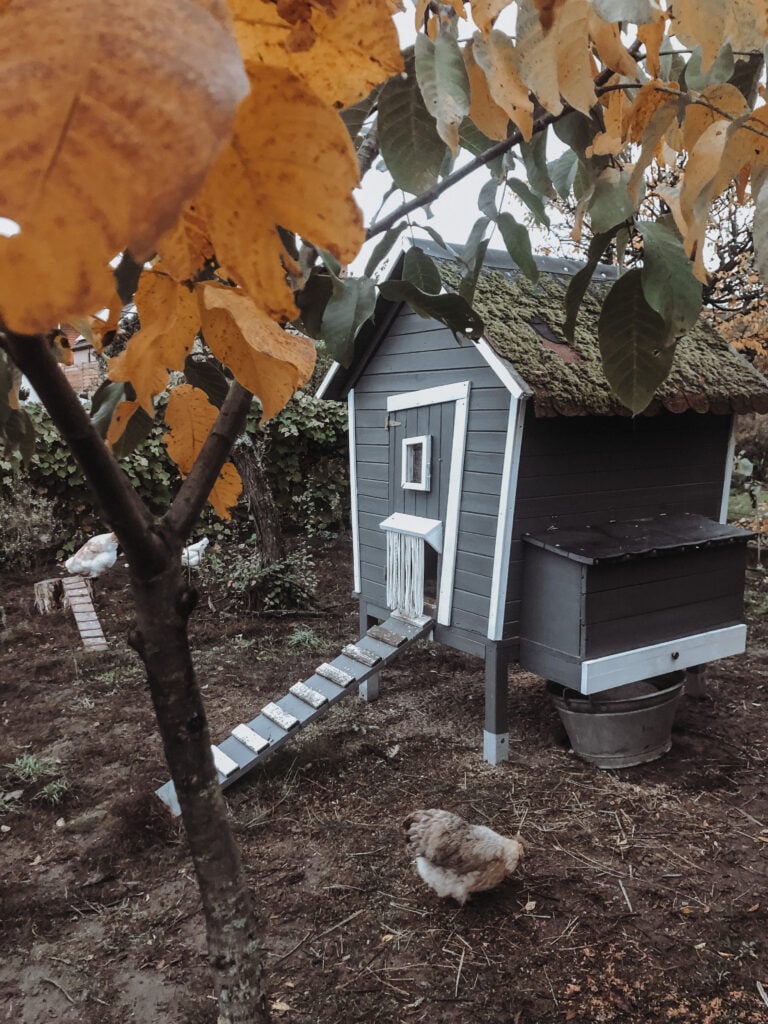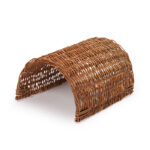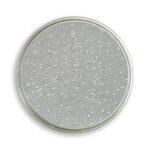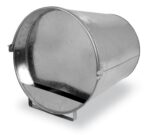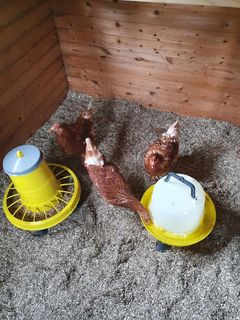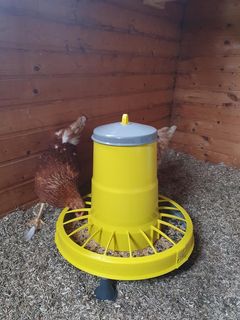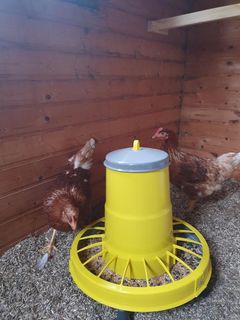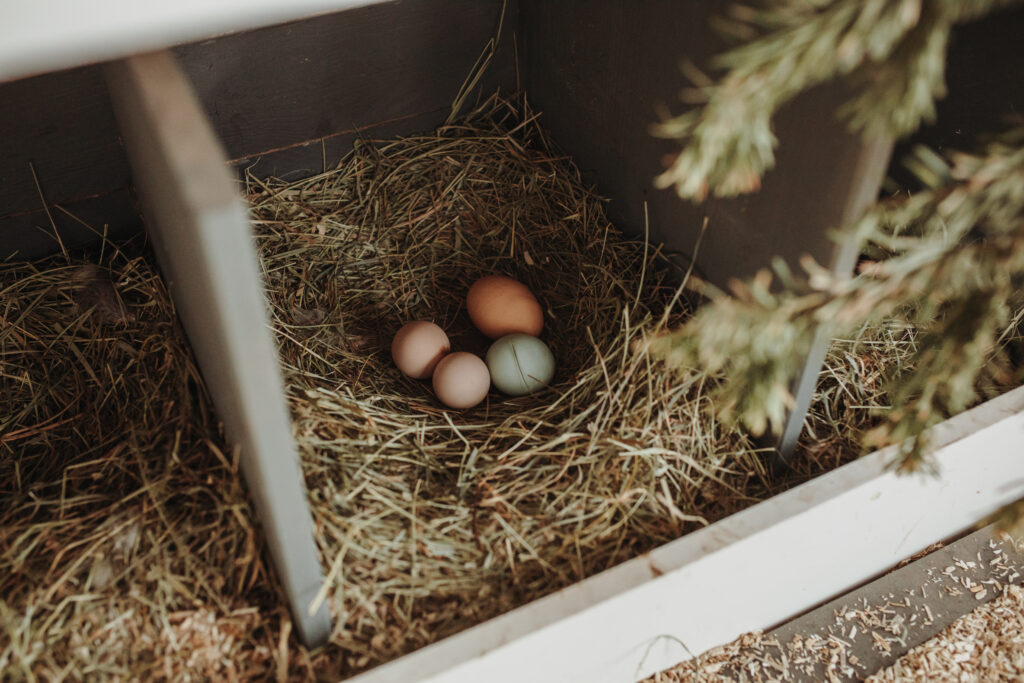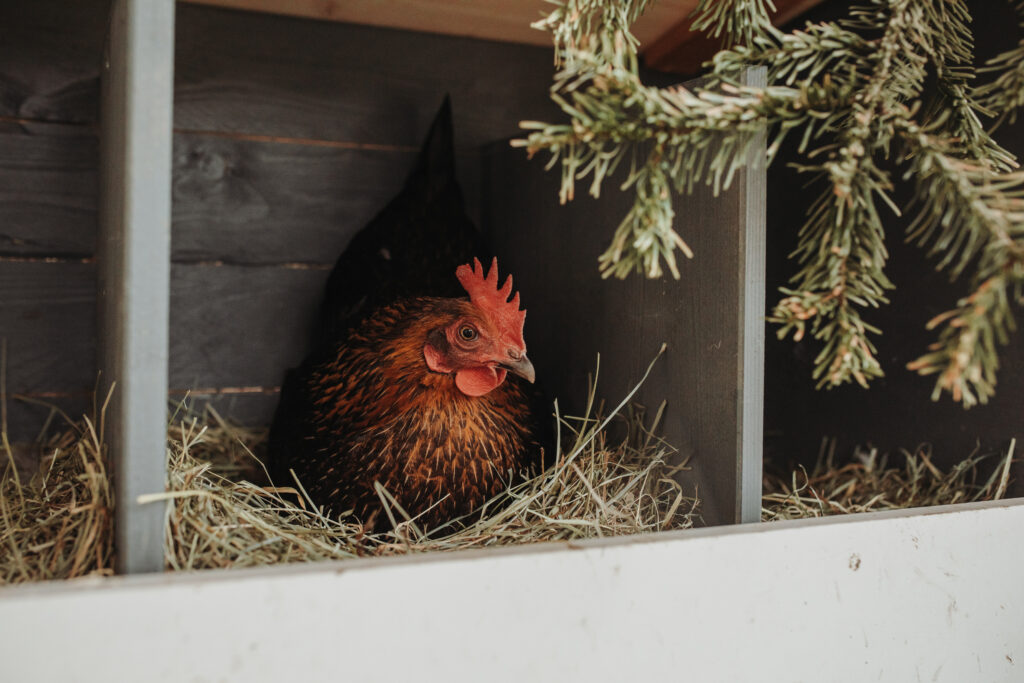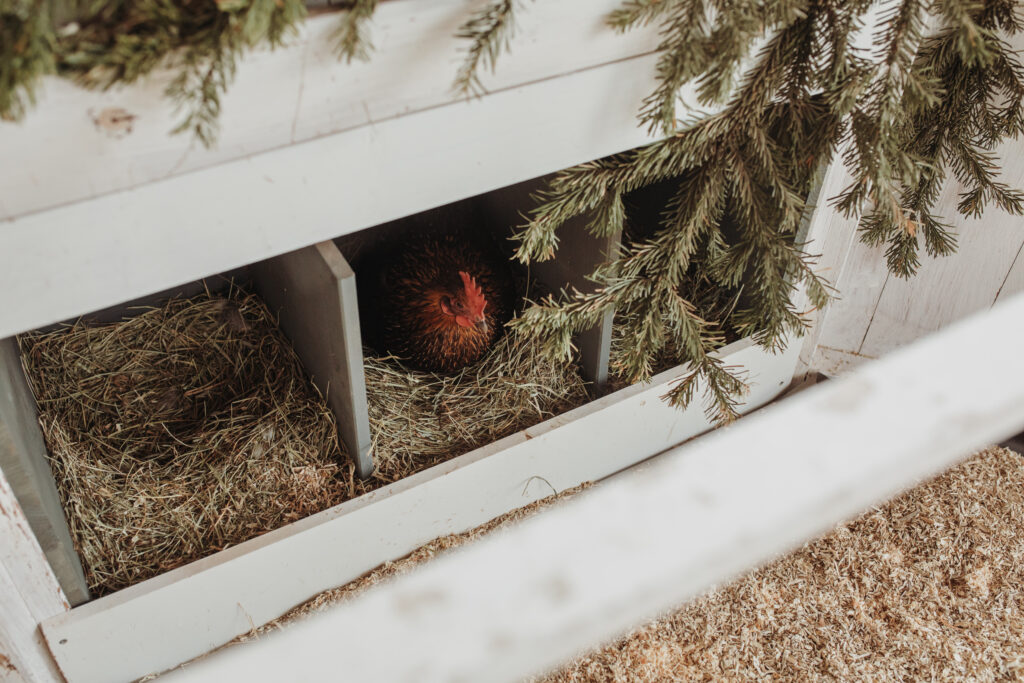The perfect chicken coop: a tour
The perfect chicken coop: a tour
In the chicken coop chickens actually only stay to sleep and lay eggs during the day. The situation is different when it is compulsory to stay in a stable, for example when there is immediate bird flu . Normally, a pure stable keeping should not occur in the hobby keeping. Especially for these times, but also otherwise, it is important to prepare the barn well so that all chickens can sometimes feel comfortable in it for longer than just overnight.
Here are a few things about the barn that are important to me from a chicken point of view:
- You should plan space for a few more animals if possible , as chickens can be addictive and you might want to keep two more chickens than originally planned.
- The following minimum requirements apply to the size of the barn in organic farming for normal-sized laying chickens:
- A maximum of six hens per square meter stall
- Four square meters of exercise space per hen
- However, these minimum requirements cannot be transferred to small hobby houses: a house with 1 m² area for 6 hens would of course be much too small and would not even be sufficient for equipment such as feed dispensers, troughs, nests and perches. For small stables & hobby chickens you should plan for 4 medium-sized hens on 2 m² or about 10 hens on 4 m² of stable area.
- If you don’t want your chickens to run out onto the street or plow the flowerbeds, you have to fence in the run and, in the case of chickens who love to fly, even secure it up with an aviary net. Such an upward net also offers protection against air attacks by birds of prey. A power fence possibly also protection against foxes, which, if they care for young, also like to look after chickens during the day.
- The stable should be tightly closed in the evening because of foxes and martens – e.g. with a fully automatic door opener & closer!
- The building materials of the barn do not play a major role for us chickens:
- Basically, of course, “your” building regulations apply here
- Insulation is also not absolutely necessary with sufficient wall thickness. Depending on the location of the stable (shady or sunny side) or for the winter , insulation can be useful
- Well-intentioned advice to the keepers: When choosing the stable, you should consider that YOU have to clean it:
- So, in your own interest, pay attention to comfort: Everything should be practical, the easier it will be for you to clean the barn regularly.
- Avoid cracks, crevices and cavities as far as possible – otherwise dirt and mites will collect here
- I’m a bit meticulous when it comes to designing the run-out . After all, I spend most of the time there. I want to be offered something. A varied design is very important for us chickens. In addition to areas for pecking and scratching and dust bathing, small hiding places (shrubs, bushes, trees) and shelters as shade or rain protection should not be missing.
Trees and bushes in the run offer shade and hiding places.

Tip: You can find lots of ideas for meaningful activities for chickens here .
Huhn Friederike recommends for the perfect chicken coop:
- 5 mx 5 m aviary nets with 10 cm mesh size – also available in other sizes
- Chicken or quail shelter “wooden hut”
- Willow shelter for chicks and quails
- Sand bath and dust bath
- From a carpenter’s hand for chicken dreams: chicken swing
- For the clever and for salad: food ball
- For intelligence beasts : snack ball
- Galvanized bucket drinkers and chic and robust stainless steel drinkers
- Rain cover for automatic feeders
- Back – friendly dustpan with handle
- Chicken pile rake with handle
- Inner handle shovel (forage shovel )
Indispensable in a retro-style stable: stainless steel drinking troughs No chicken can say “no”: sand bath with aniseed Ingenious and original: the bucket drinker – suitable for quails, chickens, turkeys, ducks and geese
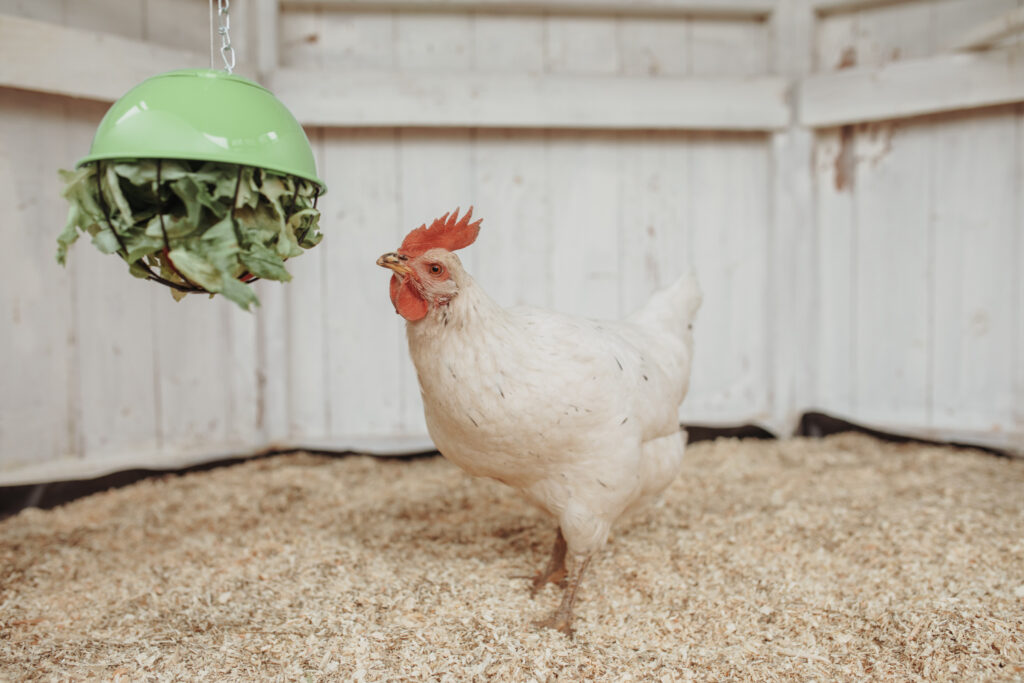
View inside the chicken coop
Now we come to the actual chicken coop. We chickens are not particularly demanding. However, there are a few things you should consider when choosing and the location of the stable interior. It starts with the choice of lights. Since we see chickens very differently from humans and because flickering that is not visible to human eyes causes us stress, flicker-free LEDs should definitely be used. In addition, in order to calm down and lay eggs undisturbed, we need a certain amount of seclusion, which is provided by laying nests, for example.
- Feeding troughs and drinking troughs should be placed in such a way that they can be easily reached depending on the “comb height”, but also stand there firmly and cannot be accidentally pushed. Many models have ( optional ) feet. Make sure that feed and drinking water are contaminated as little as possible: closed drinking systems and automatic feeders are recommended here. You can read more about this in our comparisons of chicken feeders and automatic feeders .
- Perches shouldn’t be missing either, as we not only sleep best there, but also love to sit up. So don’t plan too few perches (at least 25 cm per chicken must be available per chicken), which you attach at different heights and not too close to the wall. Perches should be rectangular (rounded corners) or oval. When it comes to height and width, the breed must be taken into account.

The perch in the barn: the chickens favorite sleeping place. - Manure board? We leave the decision up to you. We do our business anyway, only you can make your life easier with it. A manure board can be attached below the perches (sleeping area) to protect the stable floor or the litter from piles of chickens. A manure board saves work and time, as regular cleaning and the exchange of litter are limited to this and not all of the litter has to be changed as often.
- The same applies to the laying nests that they must be available in sufficient numbers. The rule of thumb here is: one laying nest for 3 to 5 chickens. There are laying nests to put down (with feet or a frame) or laying nests for wall mounting. For particularly small stables there are even special panel nests for outdoor installation .
Eggs in the nest Padded with hay, it is particularly cozy here 3 – 5 chickens can share a nest - Window and door (loophole) : A chicken coop should always offer enough light – preferably daylight – but it may be lit differently, as we like to look closely at the feed, but like it a little more dim when laying eggs. In winter, an artificial light source can extend the day and activity if necessary. The windows should not face south if possible, as the stable can heat up quickly due to the intense sunlight. The loophole should be easily accessible to all chickens. This chicken entrance and exit must be closed from dusk to dawn for robbers such as fox and martens. B. with an automatic chicken valve.
- Finally, the issue of stable climate should be taken literally: stable hygiene includes good ventilation, possibly thermal insulation, dry litter – e.g. B. also through a drying litter and stall walls with a special chicken coop color or kieselguhr application , also to ward off mites and Co.

Absorbent litter and barn walls with lime paint ensure a good climate and an environment that is unfriendly to mites.


